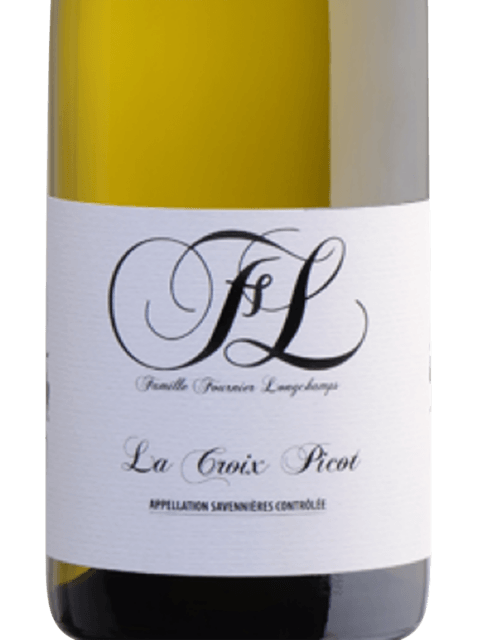 fournier-longchamp DOMAINE FL SAVENNIÈRES La Croix Picot 2018 – organic and biodynamic
fournier-longchamp DOMAINE FL SAVENNIÈRES La Croix Picot 2018 – organic and biodynamic
Loire Chenin Blanc is often overlooked in many wine circles. Sweet or dry, it can offer profound, honeyed depth, and typically ages very well. Domaine FL for some time combines classic dry Chenin Blanc notes with a strong Burgundian character.
Savennieres sits on a rich area of volcanic rock and Domaine FL’s vineyards are largely rhyolite, a granite-like form. Chenin Blanc is the perfect match and produces pure and vibrant wines from these organic plots, which in 2014 were converted to biodynamics. Domaine FL is a relative newcomer but is formed out of two historical estates and founded on the twin principles of craft and graft – but utterly reliant on fabulous terroir.
Founded in 2007, Domaine FL encompasses 75 acres in five appellations of the Loire. The Domaine was named after the parents of owner/winemaker Philip Fournier, whose surnames (Fournier and Longchamp) form the initials. Philip and his son, Julien, share winemaking responsibilities over certified organic farming and production. The Domaine sits on land that has produced wine for over eight hundred years and the wines pay specific attention and homage to the terroir.
Both father and son follow the philosophy of minimally invasive winemaking techniques, creating a balanced environment for vine growth followed with multiple passes of hand harvesting. They employ organic dry farming and precise vine management to grow wines that express the true terroir and offer great complexity.
Wines are fermented in stainless steel tanks and oak vats with strict temperature control. Wines are matured on the lees without racking for a varied amount of time and malolactic fermentation is avoided in the Chenin Blanc to preserve natural acidity and allow for long-term aging in bottle. Most wines use a mixture of neutral and new oak barrel to maintain a balanced complexity while staying true to characteristics infused from the terroir. Winemaker Kyriakos Kynigopoulos, a well-known Burgundy consultant, has been working with the family since 2014.
‘Savennières is one of the great ageable white styles of France, a conjunction of energy and minerality’ says Julien. So how do the wines evolve? ‘Like Alsace, our wines become less acidic and more mineral with time. You won’t find oxidation, you won’t find buttery notes, and you won’t usually find petrol notes. It’s more a candied citrus fruit character, perhaps a hint of white truffle.’
The shallower the soils, the more mineral the wines. The typical characteristic of Savennières is flintiness. But you’ll also find vintage character coming through. ‘Riper vintages such as 2009 might display botrytis aromas, while 2011 would be more about white flowers, and 2012 more aromatic,’ says Julien. ‘In general, you’ll find bright fruit and lemon citrus in riper years, with a confit character in warm vintages and a more electric aspect in fresher years. Acidity and minerality will always dominate, but the exposure of the vineyards also gives the wines a body that balances this.’
The milder conditions in 2018 were welcome after the severe frosts and tiny yields of 2017 (repeated this year when the estate lost around 80% of production). ‘2018 was a vintner’s vintage,’ says Julien. ‘We had a cold winter followed by a damp spring, then a nice summer; so as long as you avoided problems in the spring, then you could enjoy the long ripening period. It ended up being a good balance between quality and yields.’
92 points, Decanter: The soils in this 6 acre plot are sandy clay loam with sandstone and schist; the vines are 15 years old. Slightly less oak ageing than some of the other crus: nine months in oak on the lees. Marked minerality, and closed on the nose when you first open – give it some air before enjoying. This is a wine that doesn’t give up its pleasures easily – it requires patience. But once it does open up, you’ll find some warm, almost exotic fruit – pineapple, quince – alongside the typical flinty mineral backbone. Lovely balance between intense, natural fruit ripeness and steely acidity. Dry, succulent and full-bodied.
Drinking Window 2021 – 2030

